More than a week after a professor called police on a student for not moving seats during class, the Ball State community remains unsettled about the incident.
Students and alumni have taken to social media to voice their aggravation, more than 100 faculty members signed a letter expressing their support of the student body, a sizable crowd gathered for a student-organized protest and President Geoffrey Mearns promised action.
Still, despite national headlines and constant chatter from all sides, the student at the center of the incident, Sultan “Mufasa” Benson, said even he isn’t sure what happens next.
RELATED: NAACP condemns actions of Ball State professor
“I thought it was going to get swept under the rug the day it happened,” he said. Though students are more comfortable talking about the issue now, Benson believes no specific action was taken against Shaheen Borna, and that concerns him.
The incident occurred Jan. 21 after Benson was directed to sit in an open seat rather than his typical spot in Borna’s Marketing 310 class. In the middle of class, a student sitting near the front left the room, so Borna requested Benson move to that seat. Benson refused because he was charging his laptop, so Borna gave him the ultimatum to move seats or leave class.
Benson initially declined to do either, so Borna left the classroom and instructed a student worker to call university police.
Police arrived believing they were responding to a call of a student in distress, and Benson said the officers seemed confused once inside the classroom. When police ascertained Benson did belong in the class and was not causing a disruption — a point reiterated by his classmates — Benson agreed to leave the room.
Uniformed officers arriving in his classroom frightened him, Benson said, because of his experience living on the southside of Chicago where police intervention can result in the use of deadly force.
RELATED: Ball State student, university discuss incident caught on video
While he doesn’t want to see Borna fired, Benson does want him to do some form of community service and possibly take an “early retirement.”
The Daily News reached out to Borna, but he said he was asked by “university administration” to refrain from speaking with the media. Borna’s department chair, Russell Wahlers, after initial news reports about the incident were published, suggested the media had not fully grasped the complexities of the incident and offered to speak with The Daily News.
“I’d be happy to chat about this incident in person, at length, if you are the slightest bit interested in presenting a balanced and factual account in The Daily News,” Wahlers said in an email to The Daily News.
When contacted in attempt to set up an interview, Wahlers then said he was unable to comment.
“I wish I could share my perspectives regarding the background on this incident,” Wahlers said in an email. “However, I have been instructed to refer any interview requests to Kathy Wolf’s office. Deeply sorry.”
When contacted, Wolf, vice president for marketing and communications, said information about “significant news stories” must be coordinated through her office.
“Our exchanges over [these] topics may be confusing when persons are acting in their official capacity as opposed to when persons are speaking in their private capacity,” Wolf said in an email. “As I have indicated, with all significant news stories involving the university, including this matter, the division of Marketing & Communications serves as the central point of contact for the news media who request to obtain information or comments from the university.”
A “united front”
Angela Jackson-Brown, assistant teaching professor of English, was one of the faculty members who signed a letter in support of students and attended the Jan. 28 student-organized campus walkout.
RELATED: Letter to the Editor: Faculty condemn calling police on student
RELATED: Letter to the Editor Dear Shaheen Borna, 'the student owes you an apology'
Jackson-Brown said it is necessary for the university to see that the Ball State community has shared feelings about Borna’s behavior. She said the “united front” sends a message to the university to pay attention.
“We stand strong here at Ball State when it comes to issues like this, so I had no doubt that students, teachers and staff [were] going t o show up [at the walkout,]" she said.
While she wasn’t sure whether or not the events during the incident had racial motivations, Jackson-Brown said “we all live in a country where we know the dangers of calling the police on a black person” — particularly when the individual isn’t committing any sort of crime.
“I would say [Borna,] at the very least, understood the possible outcome of calling the police on this innocent student,” she said.
RELATED: Muncie, Ball State community leaders speak at campus walkout
Students at the walkout echoed Jackson-Brown, believing they should unite with one voice about the situation.
“If we don’t stand up and say something now … it’s just going to happen again, and again, and again,” said Caitlan Maloney, senior history and sociology major. “We actually need to do something in response to it.”
Kwesi Rogers said when he saw how the university responded to the situation, he was neither pleased nor disappointed, but instead felt like it was a “general PR response.”
Now, he said, he and “a thousand others” are concerned over what will happen next for Benson, wondering if Ball State will just “sweep it under the rug.”

Members of the Ball State community gathers to listen to and support Sultan "Mufasa" Benson at the campus walkout Jan. 28, 2020, at University Green. Other speakers at the event included Terry Whitt Bailey, former Democratic mayoral candidate for Muncie. Jake Helmen, DN
The university’s response
The incident occurred the same day Ball State finalized its first Inclusive Excellence Plan, created with input from the university’s strategic planning process and recommendations by the President’s Advisory Council on Inclusive Excellence.
The plan identifies six diversity and inclusion goals for the university. It hopes to address deficiencies in recruitment, retention, rewards and recognition, inclusive excellence training, development and curriculum, culture and climate of inclusion, and inclusive university policies, systems and infrastructure.
“The recommendations established in this new plan will help us build upon our existing efforts to achieve inclusive excellence,” Mearns wrote in an email to the university community about the plan. “Together, we can take the next step in our journey to ensure that everyone on our campus experiences a sense of belonging and engagement.”
Two days after the Benson/Borna incident, Mearns sent a campus-wide email detailing his plans for the university and the professor — including providing “appropriate training and oversight for the professor going forward.”
“This unfortunate incident provides all of us with another opportunity to get better and learn how to fulfill our commitment to providing an inclusive and supportive environment for every member of our University (sic) community,” Mearns wrote in the letter.
Benson said he is meeting personally with Mearns Feb.1.
RELATED: Ball State president responds to classroom incident
Terry Whitt Bailey, former Democratic mayoral candidate for Muncie, spoke to the students at the walkout about her own personal experiences with the university. She said Mearns had the “courage and compassion” to attend the walkout — Mearns was in attendance but did not speak to the crowd — and be among students and faculty.
Bailey told the crowd the president was an “ally” to them, and they had to give him time to take action.
“He’s been here for two years … I’ve watched him over two years,” Bailey said. “It's not just this one incident, but it's a series of activities, a series of events that he's participated in that I've not seen other leaders of the university do.”
Bailey Cline, Hannah Gunnell, Gabbi Mitchell and Rohith Rao contributed to this story.
Contact Charles Melton with comments at cwmelton@bsu.edu or on Twitter @Cmelton144.

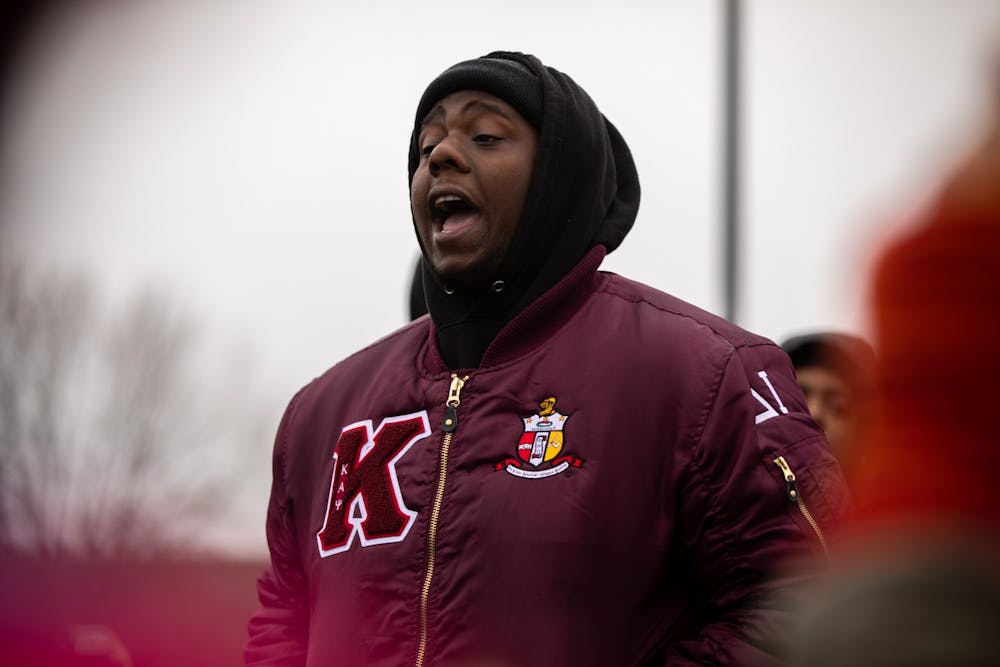 Jacob Musselman, DN" />
Jacob Musselman, DN" />
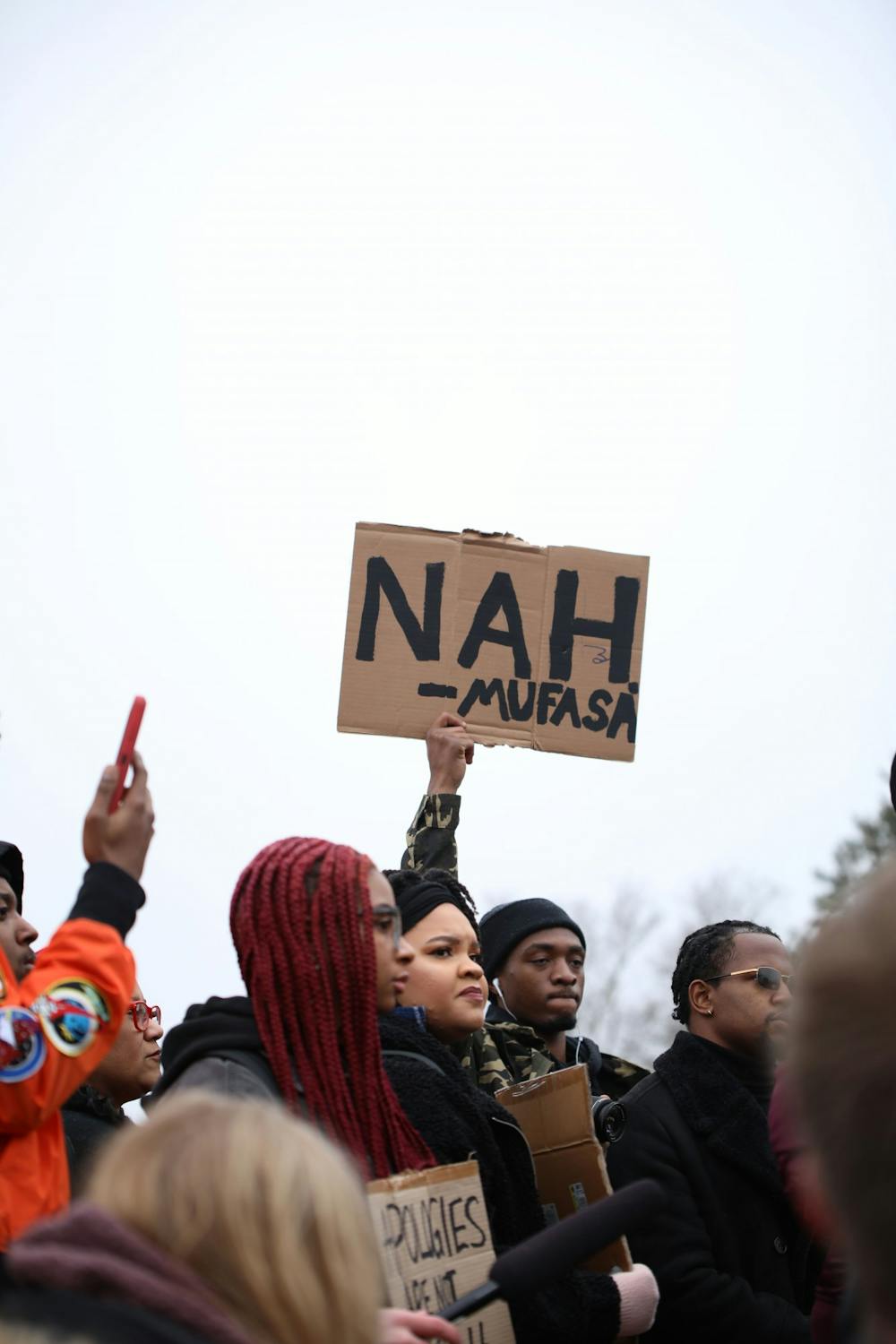
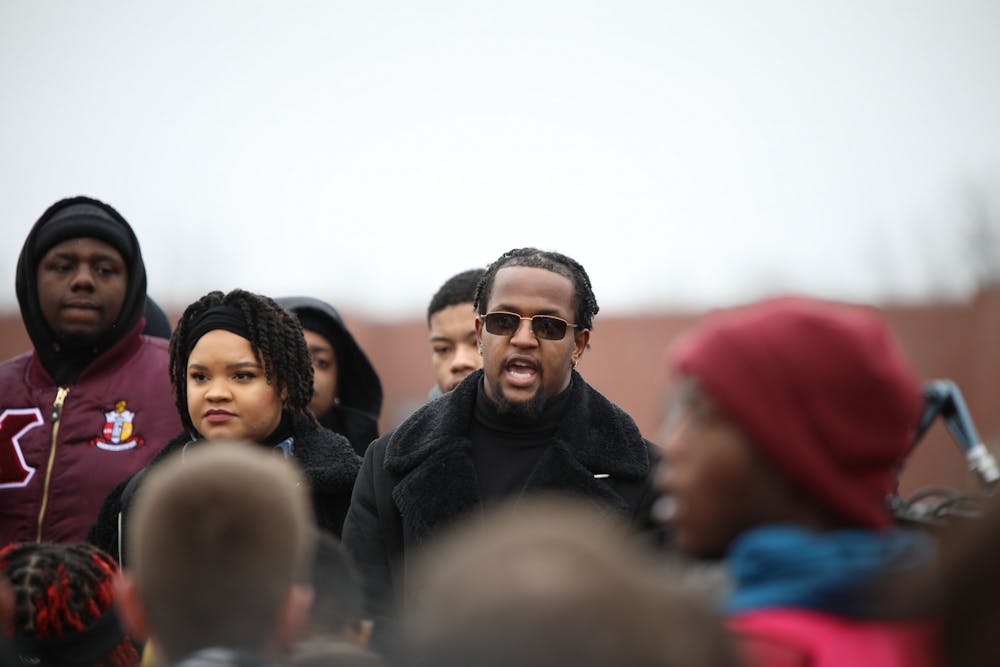
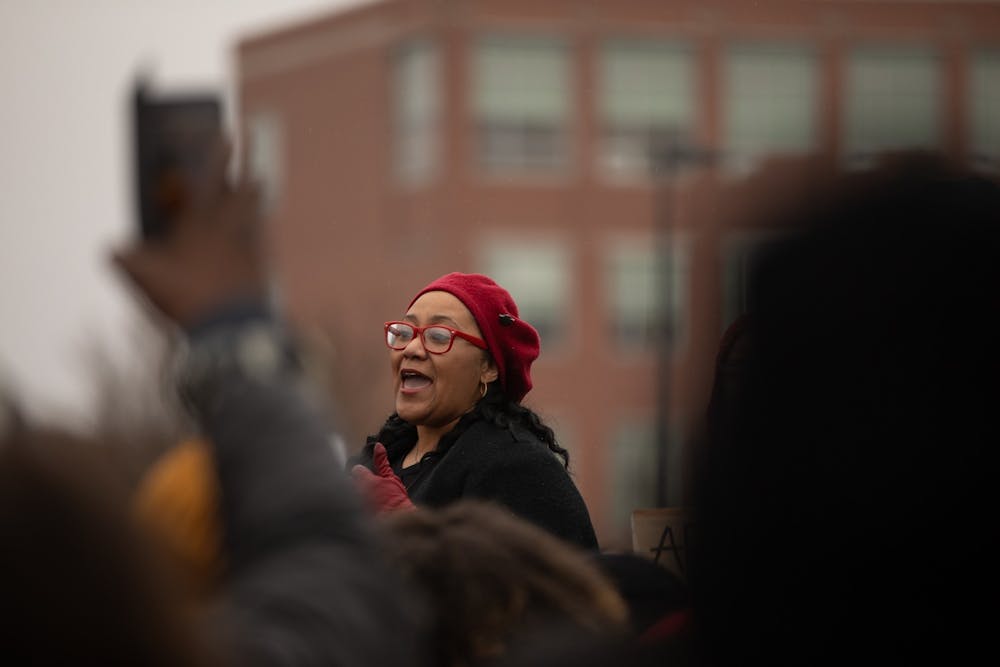
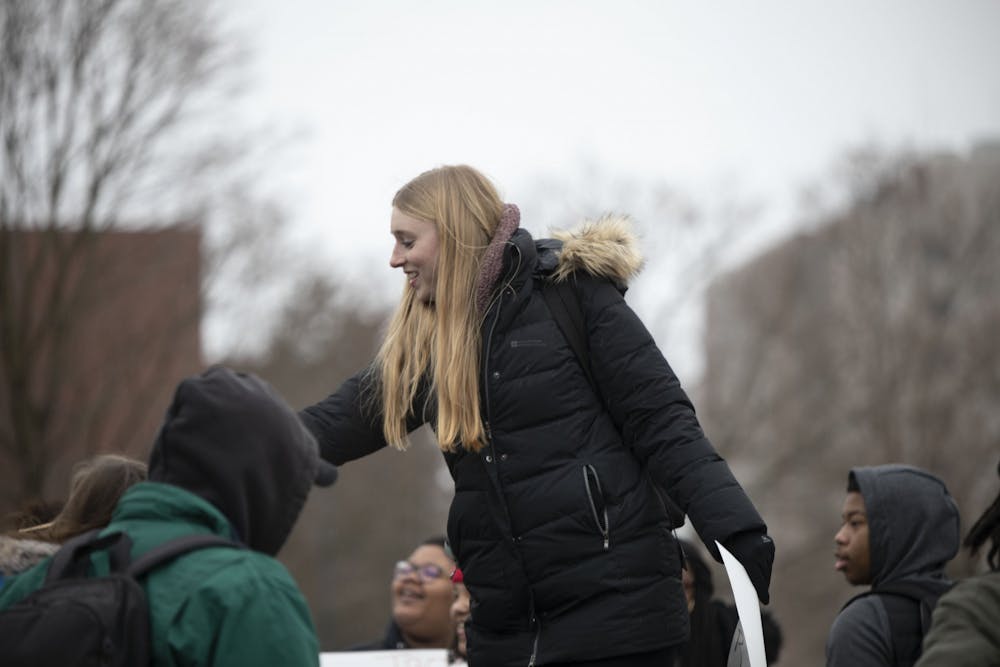

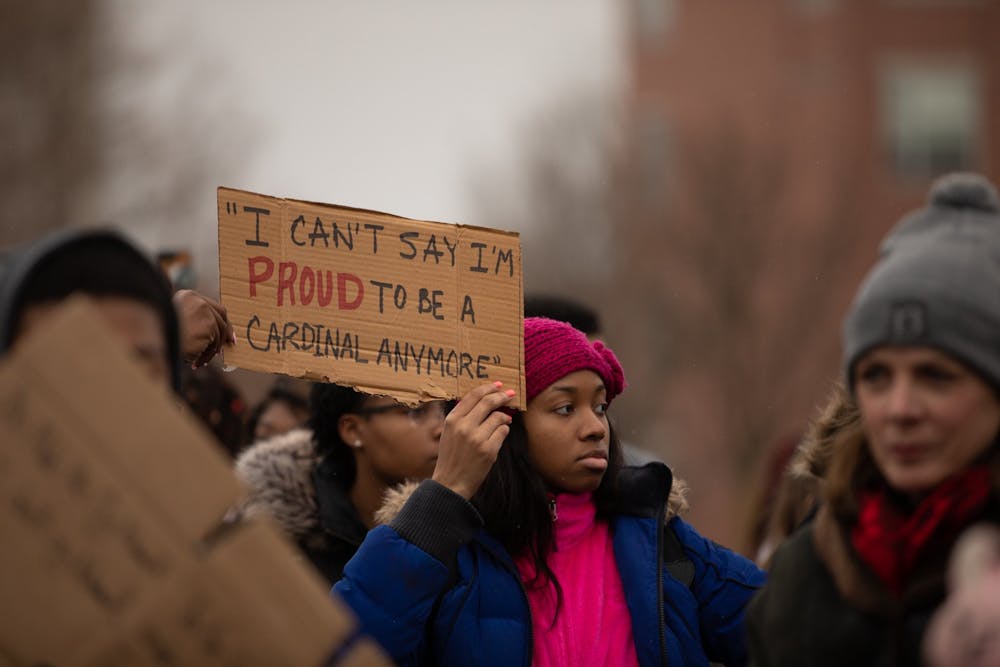 Jacob Musselman, DN" />
Jacob Musselman, DN" />
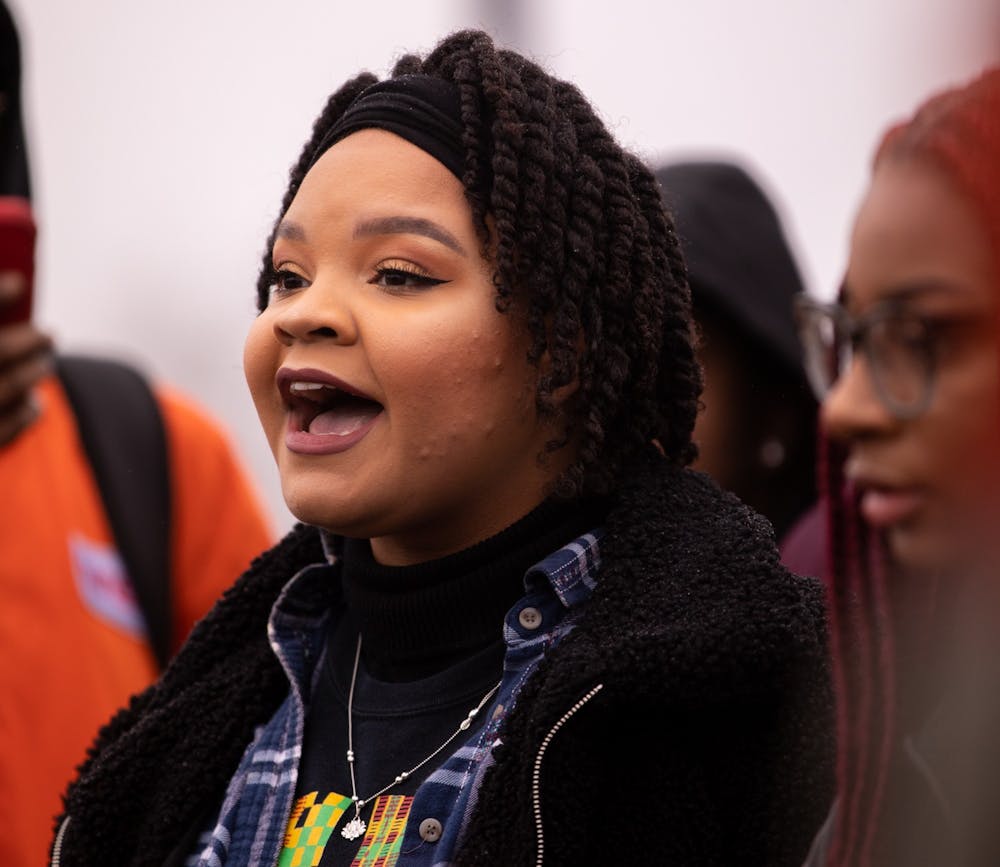 Jacob Musselman, DN" />
Jacob Musselman, DN" />
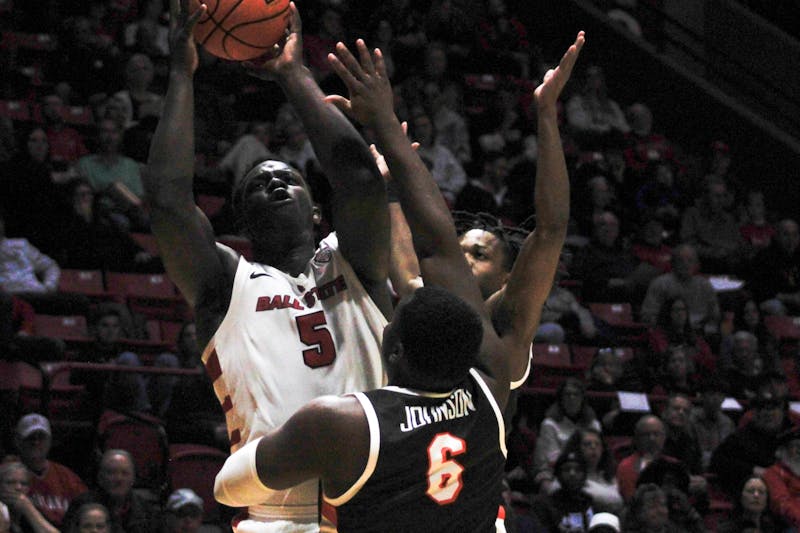
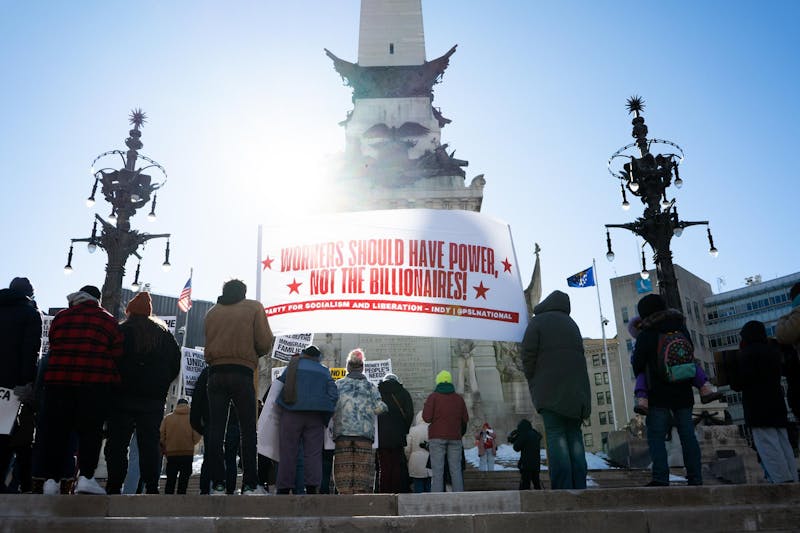
The Daily News welcomes thoughtful discussion on all of our stories, but please keep comments civil and on-topic. Read our full guidelines here.